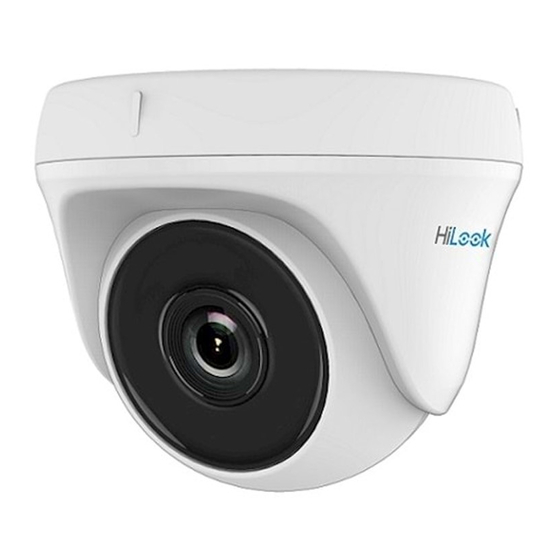
Advertisement
HD Turret and Bullet
Camera
User Manual
User Manual
Thank you for purchasing our product. If there are any
questions, or requests, do not hesitate to contact the
dealer.
This manual applies to the models below:
Type
Type I Camera
Type II Camera
Type III Camera
Type IV Camera
Type V Camera
Type VI Camera
This manual may contain several technical incorrect
places or printing errors, and the content is subject to
change without notice. The updates will be added to
the new version of this manual. We will readily improve
or update the products or procedures described in the
manual.
Model
THC-T110-P/THC-T110
THC-T120-P/THC-T120
THC-T210-P
THC-T220-P
THC-T110-M
THC-T120-M
THC-T210-M
THC-T220-M
THC-B210/THC-B210-M
THC-B220/THC-B220-M
THC-B110/THC-B110-P
THC-B120/ THC-B120-P
0100001071212
Advertisement
Table of Contents

Summarization of Contents
Regulatory Information
FCC Information
Compliance details and operating conditions for FCC regulations.
FCC Conditions
Specifies the two conditions for FCC compliance.
EU Conformity Statement
Details of CE marking and compliance with EU directives.
Industry Canada ICES-003 Compliance
Statement regarding compliance with Canadian standards.
Warning
Warning about potential radio interference in domestic environments.
1 Introduction
1.1 Product Features
Lists the main features of the HD Turret and Bullet Cameras.
1.2 Overview
Introduces the six types of cameras covered in the manual.
1.2.1 Overview of Type I Camera
Provides an overview and diagram of the Type I camera.
1.2.2 Overview of Type II Camera
Provides an overview and diagram of the Type II camera.
1.2.3 Overview of Type III Camera
Provides an overview and diagram of the Type III camera.
1.2.4 Overview of Type IV Camera
Provides an overview and diagram of the Type IV camera.
1.2.5 Overview of Type V Camera
Provides an overview and diagram of the Type V camera.
1.2.6 Overview of Type VI Camera
Provides an overview and diagram of the Type VI camera.
2 Installation
2.1 Installation of Type I and Type II Camera
Details the installation process for Type I and Type II cameras.
2.2 Installation of Type III Camera
Details the installation process for Type III cameras.
2.3 Installation of Type IV Camera
Details the installation process for Type IV cameras.
2.4 Installation of Type V and Type VI Camera
Details the installation process for Type V and Type VI cameras.
3 Menu Description
3.1 FORMAT
Explains how to set video format options for different resolutions.
3.2 EXPOSURE
Describes parameters for adjusting image brightness and exposure modes.
GLOBAL
Normal exposure mode based on overall image brightness.
BLC (Backlight Compensation)
Compensates for backlight by adjusting object brightness.
DWDR (Digital Wide Dynamic Range)
Improves image clarity in scenes with both bright and dark areas.
3.3 DAY/NIGHT
Settings for switching between color and black/white modes.
COLOR
Keeps the image in color mode at all times.
B & W (Black and White)
Keeps the image in black and white, activating IR in low light.
IR LIGHT
Controls the infrared light for low-light conditions.
SMART IR
Automatically adjusts IR intensity to prevent overexposure.
AUTO
Automatically switches between color and B/W based on scene brightness.
D→N Threshold (Day to Night Threshold)
Controls sensitivity for switching from day to night mode.
N→D Threshold (Night to Day Threshold)
Controls sensitivity for switching from night to day mode.
3.4 VIDEO SETTINGS
Adjusts video parameters like brightness, contrast, and sharpness.
BRIGHTNESS
Adjusts the image brightness from 1 to 9.
CONTRAST
Enhances color and light differences in the image.
SHARPNESS
Controls the amount of detail in the image.
SATURATION
Adjusts the color saturation of the image.
DNR (Digital Noise Reduction)
Reduces noise, especially in low light conditions.
AGC
Optimizes clarity in poor light conditions.
MIRROR
Options to flip the image horizontally, vertically, or both.





Need help?
Do you have a question about the THC-T120-M and is the answer not in the manual?
Questions and answers